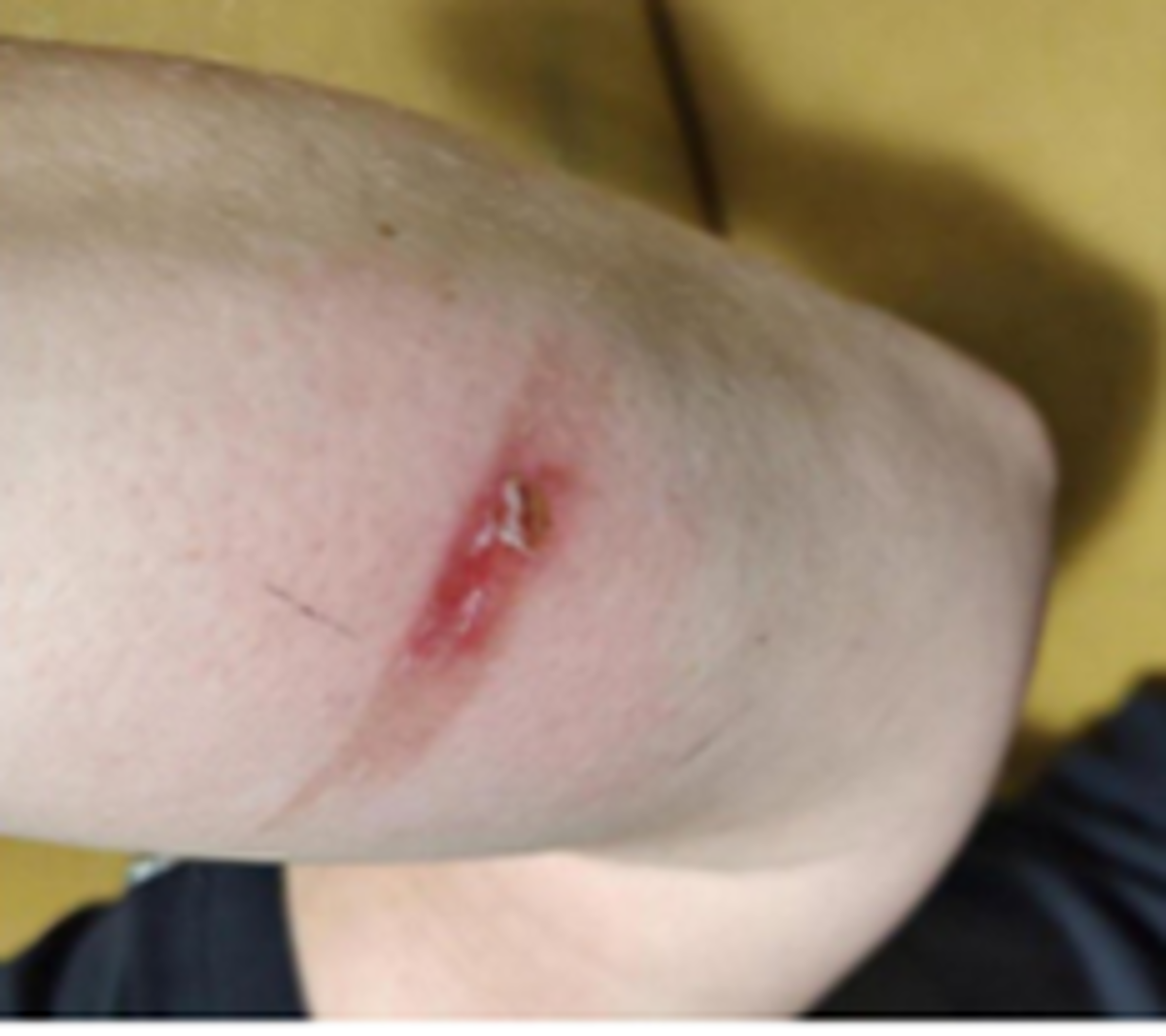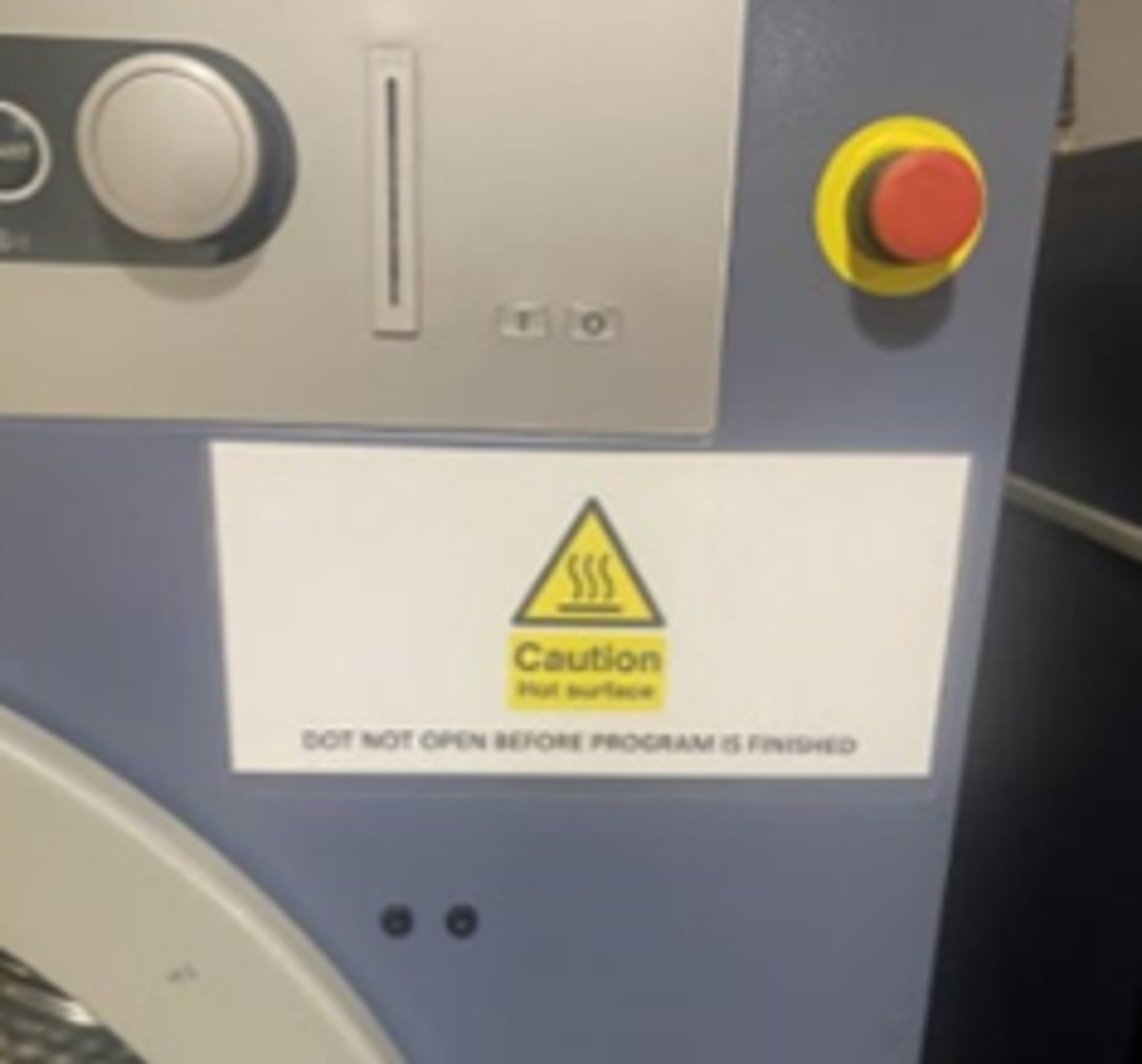MSF: Burn to arm from contact with tumble dryer
- Safety Flash
- Published on 27 October 2025
- Generated on 12 December 2025
- IMCA SF 19/25
- 2 minute read
Jump to:
The Marine Safety Forum (MSF) has published Safety Alert 25-13 relating to a crew member burning themselves on a tumble dryer.
What happened?
A crew member suffered a minor burn on the left lower arm when reaching into a tumble dryer, and their arm touched the metal frame around the door. The incident occurred when the crew member opened the tumble dryer mid-cycle, before it had finished the program, and therefore it had not completed the cooling down session.
Why did it happen?
The heavy duty tumble driers used on board ships run hot. The manual for this tumble dryer states that during the drying process there will be a maximum temperature of 80°C inside the machine. A test follow-up test done on the vessel has confirmed this. After opening the tumble dryer while running the drying program, the temperature of the frame around the door was measured at 80.2°C. It took a further two and a half minutes before the temperature was below 60°C.
Second degree burns can occur at temperatures of 60°C and above, depending on the surface and the duration of the contact. Another test showed, that if after full completion of the drying program, including the cooling down session, the temperature will be maximum 40°C.
What can we learn?
- “Safety” isn’t only for when we’re at work and on shift.
- Tumble dryers are potentially as hazardous as any rotating machine or industrial oven, and should be treated with the same respect.
- WAIT! A few moment’s patience could have saved everyone a lot of trouble, discomfort and paperwork.
- How do we make it easy to do things safely? Should the door of a tumble dryer have an interlock so that it remains locked and closed until it has cooled sufficiently to be safely opened?
Related Safety Flashes
-
IMCA SF 27/22
30 November 2022
-
-
IMCA SF 16/17
27 June 2017
-
IMCA SF 03/16
27 January 2016
IMCA Safety Flashes summarise key safety matters and incidents, allowing lessons to be more easily learnt for the benefit of the entire offshore industry.
The effectiveness of the IMCA Safety Flash system depends on the industry sharing information and so avoiding repeat incidents. Incidents are classified according to IOGP's Life Saving Rules.
All information is anonymised or sanitised, as appropriate, and warnings for graphic content included where possible.
IMCA makes every effort to ensure both the accuracy and reliability of the information shared, but is not be liable for any guidance and/or recommendation and/or statement herein contained.
The information contained in this document does not fulfil or replace any individual's or Member's legal, regulatory or other duties or obligations in respect of their operations. Individuals and Members remain solely responsible for the safe, lawful and proper conduct of their operations.
Share your safety incidents with IMCA online. Sign-up to receive Safety Flashes straight to your email.

